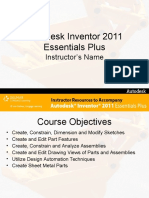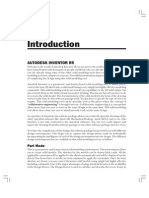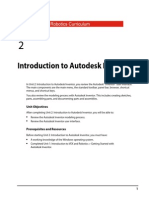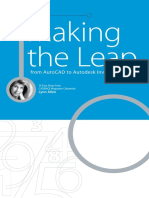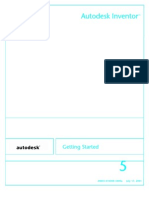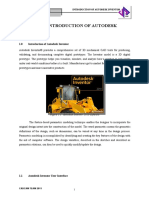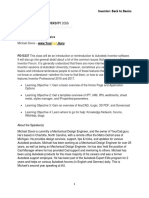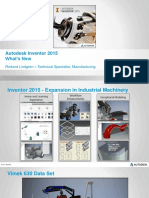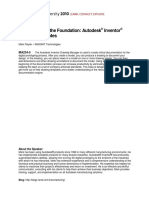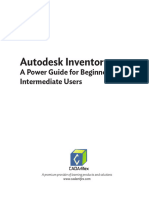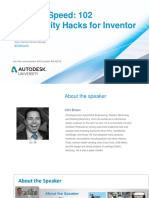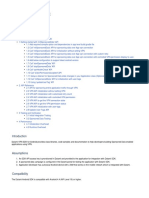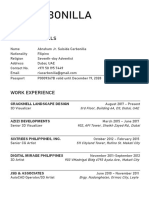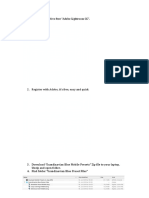0% found this document useful (0 votes)
41 views35 pagesCH01 - Introduction To Inventor
The document serves as an introduction to Autodesk Inventor 2025, detailing its solid modeling capabilities and the various environments such as Part, Assembly, Presentation, and Drawing. It outlines five key attributes of the software, including feature-based modeling and parametric features, and provides guidance on navigating the interface, managing projects, and using selection techniques. Additionally, it covers model orientation, visual styles, and the importance of documentation in creating 3D models and drawings.
Uploaded by
Florida CityCopyright
© © All Rights Reserved
We take content rights seriously. If you suspect this is your content, claim it here.
Available Formats
Download as PDF, TXT or read online on Scribd
0% found this document useful (0 votes)
41 views35 pagesCH01 - Introduction To Inventor
The document serves as an introduction to Autodesk Inventor 2025, detailing its solid modeling capabilities and the various environments such as Part, Assembly, Presentation, and Drawing. It outlines five key attributes of the software, including feature-based modeling and parametric features, and provides guidance on navigating the interface, managing projects, and using selection techniques. Additionally, it covers model orientation, visual styles, and the importance of documentation in creating 3D models and drawings.
Uploaded by
Florida CityCopyright
© © All Rights Reserved
We take content rights seriously. If you suspect this is your content, claim it here.
Available Formats
Download as PDF, TXT or read online on Scribd
/ 35
